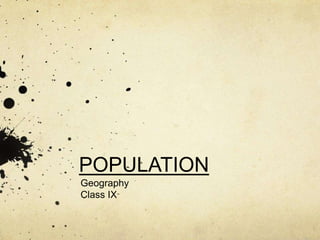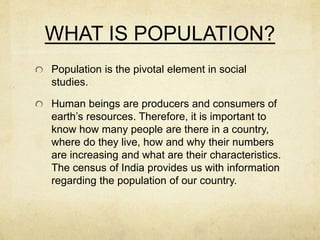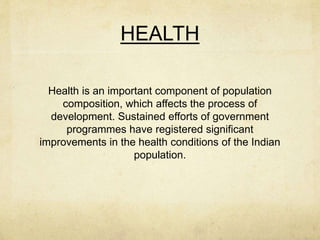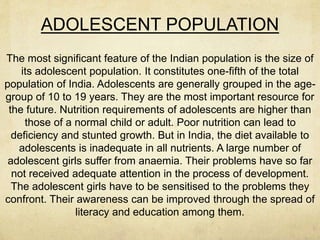India's population as of 2001 was over 1 billion people, accounting for 16.7% of the world's population. Almost half of India's population lives in just five states. Population density varies across India, with the northern plains and Kerala having high densities due to fertile land and rainfall, while other areas have moderate densities. Population growth is influenced by birth rates, death rates, and migration. Important characteristics of India's population include sex ratio, literacy levels, occupation, and health. The National Population Policy aims to promote planned parenthood, reduce infant mortality, and improve access to education and healthcare.














